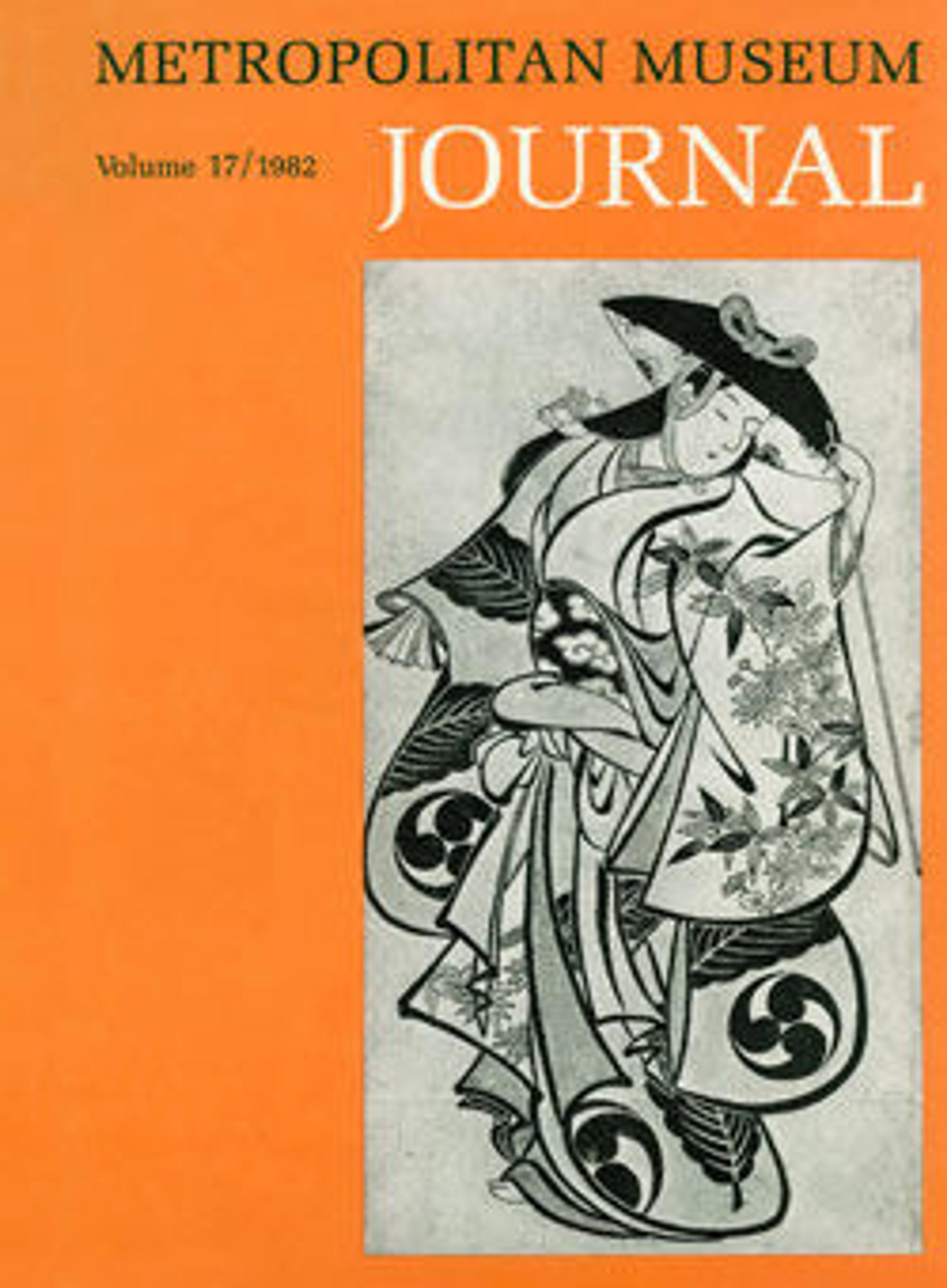Twilight Moon at Ryōgoku Bridge
The Ryōgoku Bridge depicted here was one of the most important landmarks in the Edo townscapes. Spanning Edo's widest river, the Sumida, this bridge was one of the largest and most beautiful bridges in the capital. Hiroshige focuses on the dynamic forms of the strut system supporting the bridge, a symbol of modern Edo technological advances.
Also symptomatic of Edo modernity was the development of recreational boating for the middle class. While the passengers enjoyed the Sumida River from covered gondolas (yakatabune) such as those seen here, the bridge piers would cut the landscape into unexpected shapes.
Hiroshige depicts just such a scene here; the double-x form of the Ryōgoku bridge foundation is strikingly superimposed on a backdrop of a full moon and zigzagging clouds hovering over the watersurface.
Although Hiroshige's use of the pseudonym "Ichiyūsai" as his signature indicates a date fairly early in his career, the bold confident design typical of his mature style can already be detected in this scene from the series "Famous Sights of the Eastern Capital."
Also symptomatic of Edo modernity was the development of recreational boating for the middle class. While the passengers enjoyed the Sumida River from covered gondolas (yakatabune) such as those seen here, the bridge piers would cut the landscape into unexpected shapes.
Hiroshige depicts just such a scene here; the double-x form of the Ryōgoku bridge foundation is strikingly superimposed on a backdrop of a full moon and zigzagging clouds hovering over the watersurface.
Although Hiroshige's use of the pseudonym "Ichiyūsai" as his signature indicates a date fairly early in his career, the bold confident design typical of his mature style can already be detected in this scene from the series "Famous Sights of the Eastern Capital."
Artwork Details
- Ryogoku no yoizuki
- 東都名所 両国之宵月
- Title:Twilight Moon at Ryōgoku Bridge
- Artist:Utagawa Hiroshige (Japanese, Tokyo (Edo) 1797–1858 Tokyo (Edo))
- Period:Edo period (1615–1868)
- Culture:Japan
- Medium:Woodblock print; ink and color on paper
- Dimensions:H. 9 5/8 in. (24.4 cm); W. 15 3/16 in. (38.6 cm)
- Classification:Prints
- Credit Line:Rogers Fund, 1922
- Object Number:JP1312
- Curatorial Department: Asian Art
More Artwork
Research Resources
The Met provides unparalleled resources for research and welcomes an international community of students and scholars. The Met's Open Access API is where creators and researchers can connect to the The Met collection. Open Access data and public domain images are available for unrestricted commercial and noncommercial use without permission or fee.
To request images under copyright and other restrictions, please use this Image Request form.
Feedback
We continue to research and examine historical and cultural context for objects in The Met collection. If you have comments or questions about this object record, please contact us using the form below. The Museum looks forward to receiving your comments.
